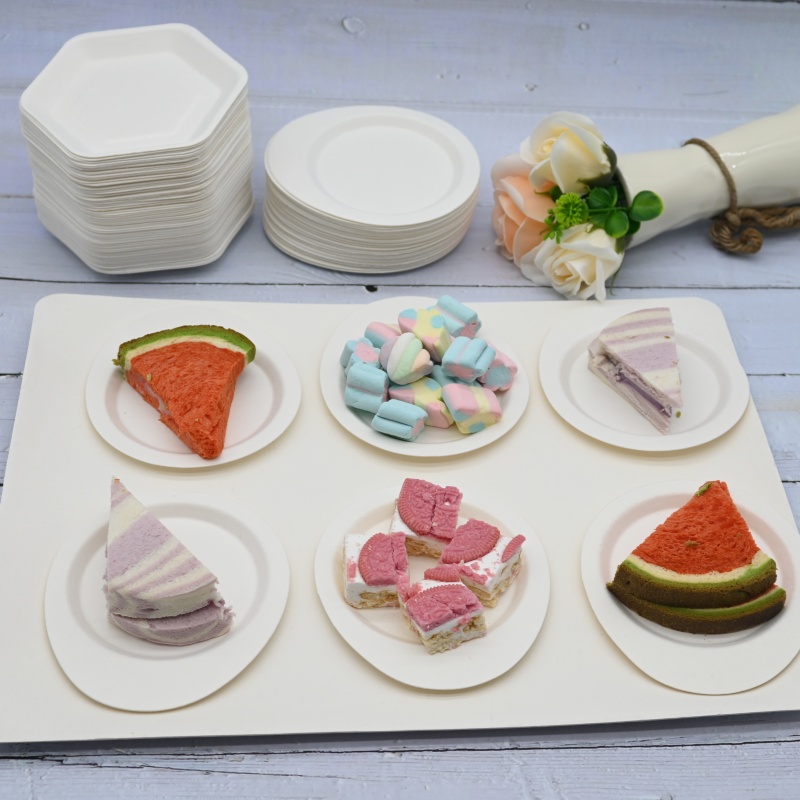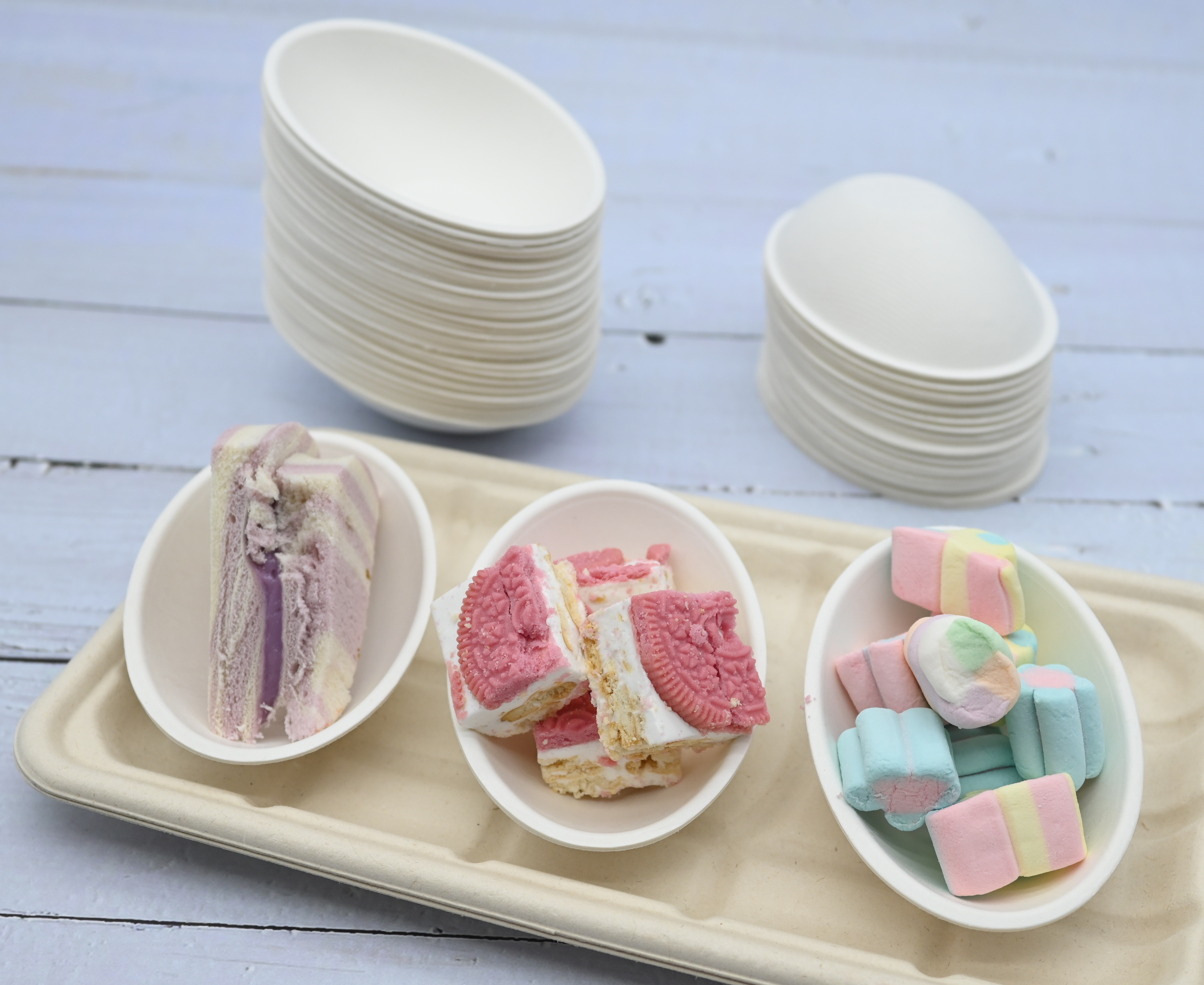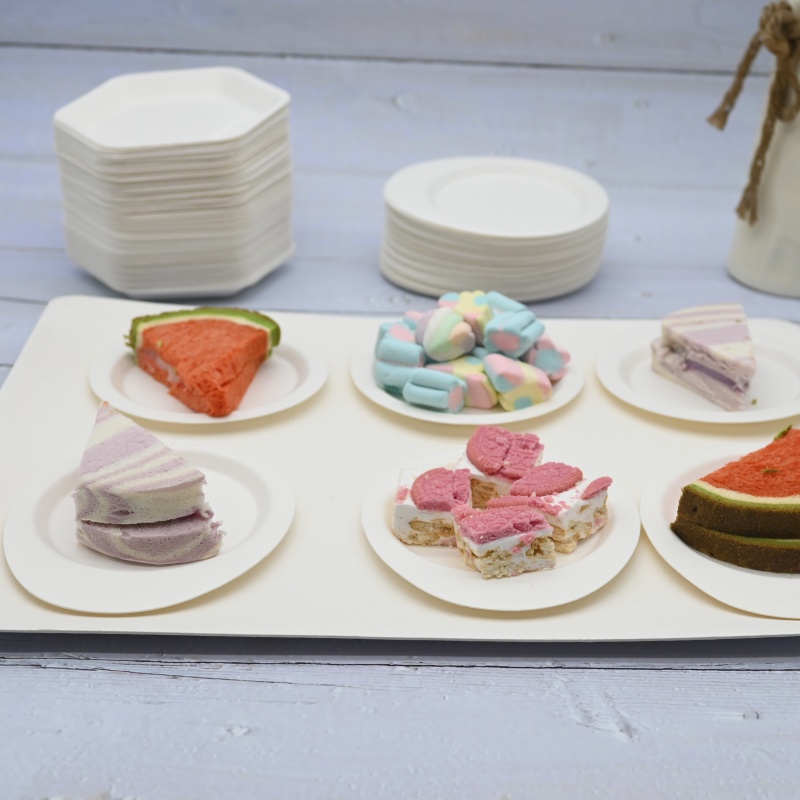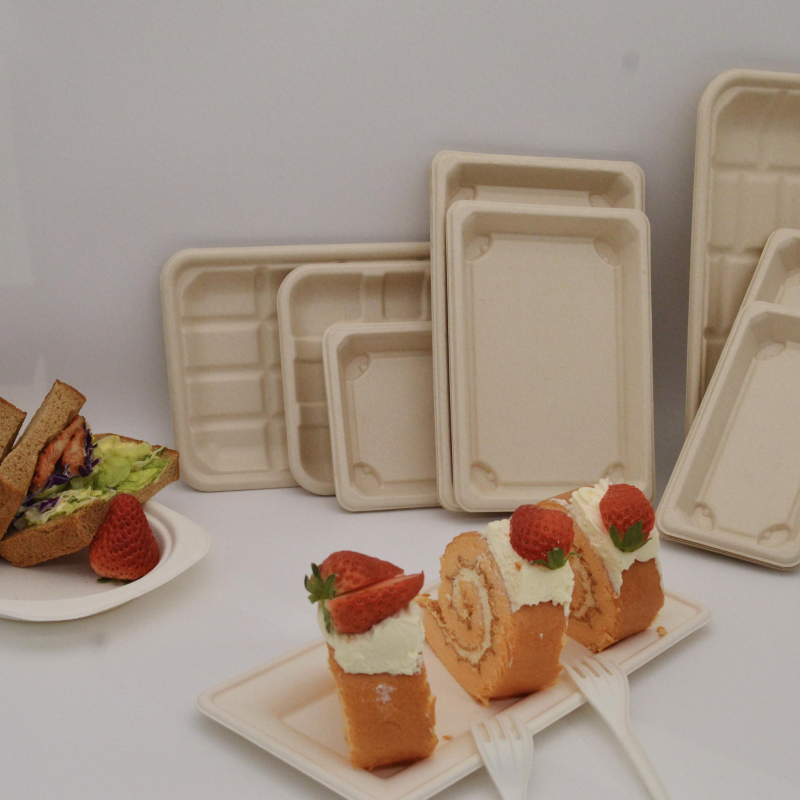Introduction to Biodegradable Food Trays
In recent years, the world has seen an increasing awareness of the environmental impact of plastic waste, leading to stricter regulations and a growing demand for sustainable alternatives. Among these alternatives, biodegradable food trays have emerged as a popular and practical solution. These trays, made from natural materials such as sugarcane pulp and cornstarch, offer an eco-friendly option for food packaging and serving.
Features and Functions of Sugarcane Pulp Trays
Sugarcane pulp trays are a standout among biodegradable food packaging solutions due to their unique characteristics. Derived from the fibrous residue left after sugarcane stalks are crushed to extract their juice, these trays are not only sustainable but also robust and versatile. Sugarcane pulp, or bagasse, is naturally resistant to grease and moisture, making it an ideal material for food trays. These trays can withstand hot and cold temperatures, ensuring they are suitable for a variety of foods, from hot meals to chilled desserts.
The manufacturing process of sugarcane pulp trays involves converting the bagasse into a pulp, which is then molded into desired shapes and dried. This process results in durable trays that can hold heavy and saucy foods without collapsing or leaking. Additionally, these trays are microwave and freezer safe, providing convenience for both consumers and food service providers. The natural composition of sugarcane pulp trays also means they are compostable and biodegradable, breaking down into harmless organic matter when disposed of properly.

Compostable and Biodegradable Properties
One of the most compelling aspects of biodegradable food trays is their ability to decompose naturally, reducing the burden on landfills and minimizing environmental pollution. Sugarcane pulp trays, along with other biodegradable options like cornstarch trays, exemplify this eco-friendly attribute. Compostable trays are designed to break down into nutrient-rich compost under specific conditions, typically within a commercial composting facility where temperature, humidity, and microbial activity are controlled.
Cornstarch trays, another popular biodegradable option, are made from polylactic acid (PLA) derived from fermented plant starch. Like sugarcane pulp trays, they are compostable and break down into non-toxic components. However, the decomposition of PLA products usually requires industrial composting conditions, as they may not degrade efficiently in a home composting setup. Regardless, both sugarcane pulp and cornstarch trays offer significant environmental benefits by reducing reliance on plastic and contributing to a circular economy.
Health and Safety Benefits
Biodegradable food trays not only benefit the environment but also offer health and safety advantages for consumers. Traditional plastic food trays can contain harmful chemicals like bisphenol A (BPA) and phthalates, which can leach into food and pose health risks. In contrast, biodegradable trays made from natural materials are free from these toxic substances, ensuring safer food contact.
Moreover, sugarcane pulp and cornstarch trays are produced through eco-friendly processes that avoid the use of harmful chemicals and pesticides. This results in cleaner, safer products that are suitable for a wide range of dietary preferences and restrictions. Additionally, the sturdy construction of biodegradable trays ensures they do not easily break or splinter, reducing the risk of accidental ingestion of small plastic fragments, which is a common concern with traditional plastic trays.

Environmental Impact
The environmental impact of biodegradable food trays is significantly lower compared to their plastic counterparts. Plastic waste is notorious for its persistence in the environment, taking hundreds of years to decompose and often breaking down into microplastics that pollute waterways and harm marine life. In contrast, biodegradable trays decompose within months, returning valuable nutrients to the soil and reducing the accumulation of waste in landfills.
The production of biodegradable trays also typically involves lower carbon emissions and energy consumption compared to plastic manufacturing. For instance, the process of converting sugarcane bagasse into pulp utilizes agricultural by-products, making efficient use of resources that would otherwise go to waste. Cornstarch trays, derived from renewable plant sources, further reduce the carbon footprint associated with food packaging. By choosing biodegradable trays, consumers and business es can actively contribute to reducing pollution and promoting a more sustainable future.
Biodegradable Trays as an Ideal Choice for Takeout Services
The rise in food delivery and takeout services has made the need for sustainable packaging solutions more pressing than ever. Biodegradable food trays are particularly well-suited for this purpose, offering a range of benefits for both businesses and consumers.
First and foremost, the durability and moisture-resistant properties of sugarcane pulp trays make them ideal for transporting a variety of dishes, from greasy fast food to delicate pastries. These trays can securely hold food without leaking or becoming soggy, ensuring that meals arrive in perfect condition. Additionally, the insulating properties of these trays help maintain the temperature of hot and cold foods during transit.
For businesses, using biodegradable trays for takeout not only aligns with environmentally conscious practices but also enhances brand image. Customers are increasingly seeking out companies that prioritize sustainability, and using eco-friendly packaging can set a business apart from its competitors. Moreover, many municipalities are implementing regulations that restrict the use of single-use plastics, making biodegradable trays a practical and forward-thinking choice.
From a consumer perspective, knowing that the packaging is compostable and biodegradable adds value to the overall dining experience. It allows customers to enjoy their meals guilt-free, knowing they are contributing to environmental conservation. As awareness of plastic pollution grows, the demand for sustainable takeout options is likely to continue rising, making biodegradable trays an essential component of any food service operation.

Common Questions and Answers
1. How long do biodegradable food trays take to decompose?
The decomposition time for biodegradable food trays varies depending on the material and composting conditions. Sugarcane pulp trays can break down within 30 to 90 days in a commercial composting facility, while cornstarch trays may take a similar timeframe under industrial composting conditions.
2. Can biodegradable trays be used in the microwave and freezer?
Yes, most biodegradable trays, including those made from sugarcane pulp, are microwave and freezer safe. They can withstand high temperatures without melting or releasing harmful chemicals, making them versatile for various food storage and heating needs.
3. Are biodegradable trays more expensive than plastic trays?
While biodegradable trays may have a higher upfront cost compared to plastic trays, their environmental and health benefits often outweigh the price difference. Additionally, as demand for sustainable products grows, the cost of biodegradable trays is expected to decrease.
4. Are all biodegradable trays compostable at home?
Not all biodegradable trays are suitable for home composting. While sugarcane pulp trays can generally decompose in a backyard compost setup, cornstarch (PLA) trays typically require the higher temperatures and controlled conditions of industrial composting facilities to break down efficiently.
5. What should I do if my local waste management does not support composting?
If your local waste management does not support composting, you can explore alternative disposal options, such as sending biodegradable trays to a commercial composting facility or using a community composting program. Some municipalities and organizations offer composting drop-off points for residents.

Biodegradable food trays are poised to become a mainstream solution in the wake of plastic restrictions. Their environmental benefits, combined with growing regulatory and consumer pressure, suggest a significant shift towards sustainable packaging solutions in the near future. As we continue to innovate and improve these materials, we move closer to a more sustainable and eco-friendly world.
Biodegradable food trays represent a significant advancement in sustainable food packaging, offering practical, eco-friendly alternatives to traditional plastic trays. With materials like sugarcane pulp and cornstarch, these trays are not only compostable and biodegradable but also safe and versatile for various food applications, including takeout services. By adopting biodegradable trays, we can reduce our environmental footprint, promote healthier living, and contribute to a cleaner, more sustainable planet.
We will continue to update the article content for the above frequently asked questions, so please stay tuned!
Post time: Jul-01-2024










